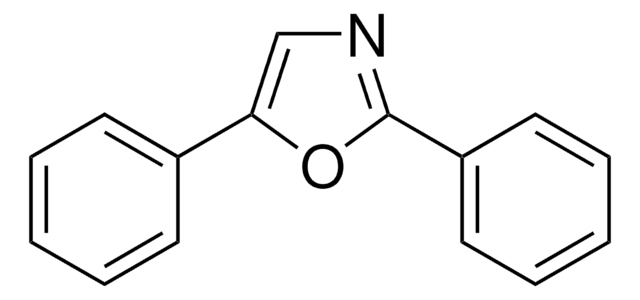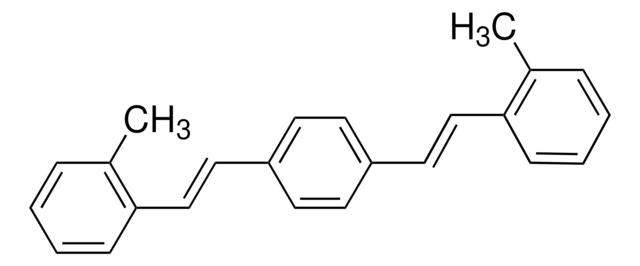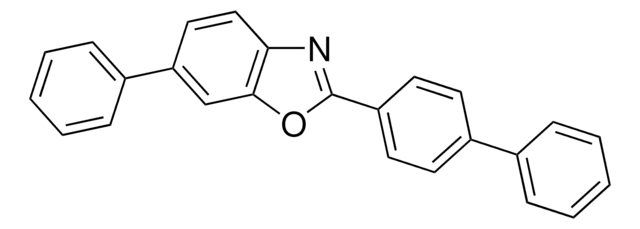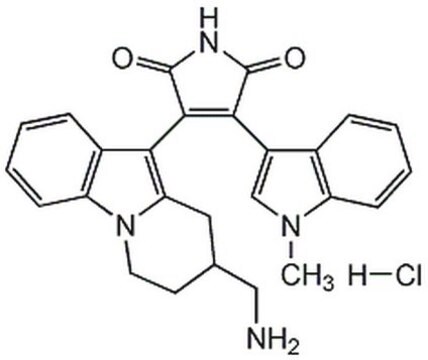P3754
1,4-Bis(5-phenyl-2-oxazolyl)benzene
BioReagent, suitable for scintillation
Synonyme(s) :
1,4-Bis(5-phenyl-2-oxazolyl)benzene, 2,2′-p-Phenylene-bis(5-phenyloxazole), Di(phenyl-5-oxazolyl-2)-1,4-benzene, POPOP
About This Item
Produits recommandés
Gamme de produits
BioReagent
Forme
powder
Pf
242-246 °C (lit.)
Adéquation
suitable for scintillation
Chaîne SMILES
c1ccc(cc1)-c2cnc(o2)-c3ccc(cc3)-c4ncc(o4)-c5ccccc5
InChI
1S/C24H16N2O2/c1-3-7-17(8-4-1)21-15-25-23(27-21)19-11-13-20(14-12-19)24-26-16-22(28-24)18-9-5-2-6-10-18/h1-16H
Clé InChI
MASVCBBIUQRUKL-UHFFFAOYSA-N
Vous recherchez des produits similaires ? Visite Guide de comparaison des produits
Description générale
Application
Caractéristiques et avantages
- High fluorescence quantum yield.
- High molar absorptivity.
- Large Stokes Shift.
- High Photostability in most organic solvents.
Produit(s) apparenté(s)
Mention d'avertissement
Warning
Mentions de danger
Conseils de prudence
Classification des risques
Acute Tox. 4 Oral - Eye Irrit. 2
Code de la classe de stockage
11 - Combustible Solids
Classe de danger pour l'eau (WGK)
WGK 2
Point d'éclair (°F)
Not applicable
Point d'éclair (°C)
Not applicable
Équipement de protection individuelle
dust mask type N95 (US), Eyeshields, Gloves
Certificats d'analyse (COA)
Recherchez un Certificats d'analyse (COA) en saisissant le numéro de lot du produit. Les numéros de lot figurent sur l'étiquette du produit après les mots "Lot" ou "Batch".
Déjà en possession de ce produit ?
Retrouvez la documentation relative aux produits que vous avez récemment achetés dans la Bibliothèque de documents.
Les clients ont également consulté
Notre équipe de scientifiques dispose d'une expérience dans tous les secteurs de la recherche, notamment en sciences de la vie, science des matériaux, synthèse chimique, chromatographie, analyse et dans de nombreux autres domaines..
Contacter notre Service technique








